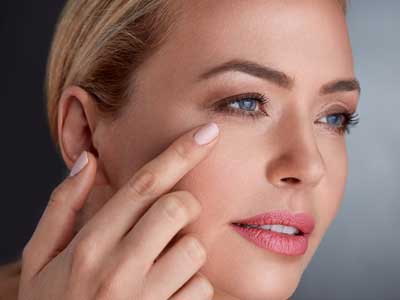Stem Cell Therapy – The Science
Stem cells, both the embryonic form and adult stem cells, are increasingly acknowledged as providing one of nature’s best tools in the fight against many types of conditions. These stem cells are able to renew themselves, divide, and then grow into various new cell and tissue types including cartilage and bone. They exist in various tissues in each of us, and are ready to repair any damage in the body, but they deplete with age, and can have difficulty in repairing more significant injuries as not enough of the stem cells can reach the affected site.
Our Stem Cell therapies extract cells from a particular area in high volume, and then process these to concentrate them further. During the same overall procedure, we inject the concentrated stem cells into the patient’s damaged area, to accelerate the body’s natural healing process. This therapy can be used to treat a wide range of conditions and are particularly suited to sporting and other injuries, as well as arthritis and also aesthetic procedures. They can be harvested commonly from adipose (fat) tissue, bone marrow and even blood.
Which areas can be treated using stem cells?
The beauty of stem cells is that they are perfectly suited to use in a wide variety of situations where there is a need to repair or regenerate existing damaged joints, structures and tissues.
Where hip, knee and shoulder joints have been degenerated as a result of arthritis, for example, the cause of the associated pain, discomfort and loss of function is often that the protective layer of cartilage over the surface joint which has been weakened. When this happens, the joint becomes exposed and symptoms become more severe. The aim of the stem cell therapy in this situation is to encourage the regeneration of the cartilage around the joint, thereby preserving the joint itself and alleviating related symptoms.
More generally, existing stem cells around bone, cartilage and other tissue, have been shown to be unable to regroup themselves into a healing mechanism to repair those tissues. Newly introduced stem cells extracted from patients demonstrate plasticity and multi-potency i.e. they morph into other cell types and have the ability to multiply. This ability to create new cells, along with their signalling to existing stem cells to regroup and begin repairing damaged joints, is what creates the overall impact of healing the damaged tissue.
In addition to using stem cells to treat injured or degenerative conditions, stem cell therapy is also used for aesthetic procedures including skin rejuvenation. The principal remains the same, in that the extract and reinjected stem cells are used in targeted areas, to encourage the body to produce more cells locally, such as fibroids and collagen. The effect of such treatment can be to firm skin, give more definition and to introduce greater volume, all of which bring about a fresher, more youthful appearance.
What is involved in stem cell treatments?
A typical procedure initially harvests stem cells directly from the patient, and would usually be from fat cells as this is where there is easy access to a large volume of such cells. Following a local anaesthetic, a specialist needle is used to harvest fat from the patient, usually the abdomen, and this is processed in the treatment room, whilst the patient is still present.
Whilst the specialist system is cleaning and separating or concentrating the stem cells from the other elements which make up the fat, the clinician will prepare the patient for the injection of the cells. Because there is only one visit to the clinic, we minimise any risk of disease transmission, rejection or ethical controversy that could arise where cells from an unrelated donor are used, or where cells are processed by a facility outside the operating theatre. The equipment we use is ‘closed circuit’ i.e. there is no contact with the air or any other matter between being removed from the patient and then reinjected, again meaning we keep any risk of infection to the absolute minimum.
Once ready, the harvested and concentrated stem cells, are carefully injected into the patient to the specific areas requiring treatment, so encouraging existing, depleted cells to grow and multiply. This process then regenerates the tissues with the aim of treating the underlying conditions causing discomfort or other undesired effects.
Are there any side effects?
Whenever a medical procedure is undertaken there is some degree of risk, but as stem cell procedures are undertaken with minimal cuts or similar to the patient, and as there is usually only one procedure which is both harvesting and treating combined, the risk is kept to a minimum. In addition, our use of a closed system i.e. between extracting and reinjecting cells, further minimises any contamination risk and the risk of infection.
There is a small risk related to these procedures of infection, which in high risk individuals we may cover with prophylactic antibiotic treatment.

